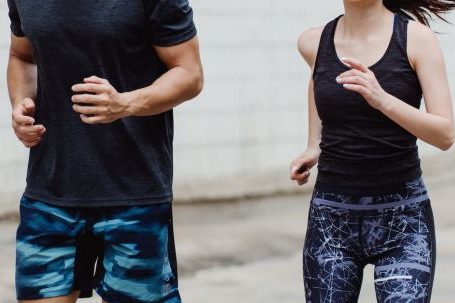Squatting is a fundamental exercise that targets multiple muscle groups and is a staple in many fitness routines. However, executing the squat properly can be challenging, and improper technique can lead to injuries or hinder your progress. In this article, we will discuss effective strategies to improve your squatting technique, allowing you to maximize your gains and minimize the risk of injuries.
1. Proper Form and Alignment
The first step to improving your squatting technique is to ensure proper form and alignment. Start by standing with your feet shoulder-width apart and toes pointing slightly outward. As you descend into the squat, keep your chest up, back straight, and engage your core muscles. Avoid rounding your back or allowing your knees to cave inward. Maintaining proper alignment will not only maximize muscle activation but also protect your joints.
2. Depth and Range of Motion
The depth of your squat is crucial for targeting the right muscles and building strength. Aim to squat low enough so that your thighs are parallel to the ground or slightly below. This ensures that you are engaging your glutes, hamstrings, and quads effectively. However, it’s important to find a range of motion that is comfortable for you. Start with a partial squat if you are a beginner and gradually increase the depth as your flexibility and strength improve.
3. Control and Tempo
Many people rush through their squats, sacrificing control for speed. However, slow and controlled movements are key to developing strength and stability. Focus on lowering yourself into the squat with control and pushing back up using the power of your legs. Avoid bouncing at the bottom or using momentum to lift the weight. By maintaining a steady tempo, you will engage your muscles more effectively and reduce the risk of injury.
4. Breathing Technique
Proper breathing technique is often overlooked but can greatly enhance your squatting performance. Breathe in deeply before descending into the squat, and exhale forcefully as you push back up. This technique, known as the valsalva maneuver, helps stabilize your core and provides extra support for your spine. Remember to maintain a steady rhythm of inhaling and exhaling throughout each repetition.
5. Footwear and Equipment
The right footwear and equipment can make a significant difference in your squatting technique. Invest in a good pair of weightlifting shoes that provide stability and support. These shoes have a raised heel, which allows you to maintain proper form and achieve greater depth in your squat. Additionally, consider using a weightlifting belt to provide extra support for your lower back and core muscles. However, it’s important to note that these accessories should not be used as substitutes for proper form and technique.
6. Mobility and Flexibility
Mobility and flexibility are essential for performing squats correctly and preventing injuries. Incorporate exercises that improve hip, ankle, and thoracic spine mobility into your warm-up routine. Stretching your hip flexors, hamstrings, and calves regularly will also help improve your squatting technique. Remember to warm up properly before each squatting session to prepare your body for the movements ahead.
7. Gradual Progression
Finally, improving your squatting technique requires patience and gradual progression. Start with lighter weights and focus on perfecting your form before increasing the load. As you become more comfortable and confident, gradually increase the weight while maintaining proper technique. This progressive approach will not only prevent injuries but also ensure consistent progress in your strength and muscle development.
In conclusion, improving your squatting technique is essential for maximizing the benefits of this powerful exercise. By focusing on proper form and alignment, controlling your movements, using the right breathing technique, and incorporating mobility exercises, you will enhance your squatting performance and reduce the risk of injuries. Remember to start with lighter weights, progress gradually, and listen to your body. With consistent practice and attention to detail, you will be able to master the squat and reap the rewards it offers.





